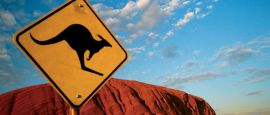Australia History, Language and Culture
History of Australia
Australia's history stretches back tens of thousands of years, with Aboriginal and Torres Strait Islander peoples nurturing deep connections to land, sea and sky. Their cultures, languages and Dreaming stories form one of the world's oldest continuous civilisations. European contact began in the 17th century, but it was not until 1788 that the First Fleet arrived and Britain established a penal colony at Sydney Cove. Early settlement expanded rapidly, often with devastating consequences for Indigenous communities.
The 19th-century gold rushes transformed Australia, attracting migrants from around the world and fuelling economic growth. Six separate colonies gradually developed into vibrant cities and regions, and in 1901 they unified to form the Commonwealth of Australia. The young nation played significant roles in both World Wars and grew increasingly multicultural in the decades that followed.
Modern Australia is a prosperous, diverse country known for its outdoor lifestyle, dramatic landscapes and continuing efforts toward reconciliation with First Nations peoples. Travellers will find reminders of its layered past everywhere — from ancient rock art and colonial buildings to cultural festivals and living Indigenous traditions.
Did you know?
• Australia is home to Uluru, a sandstone monolith sacred to the Anangu people and one of the most recognisable landmarks in the world.
• More than 80% of Australians live within 50km of the coast, making it one of the most coastal-dwelling populations on Earth.
• The Great Barrier Reef is the planet's largest coral reef system, stretching over 2,300 kilometres along Queensland's coast.





 You know where
You know where